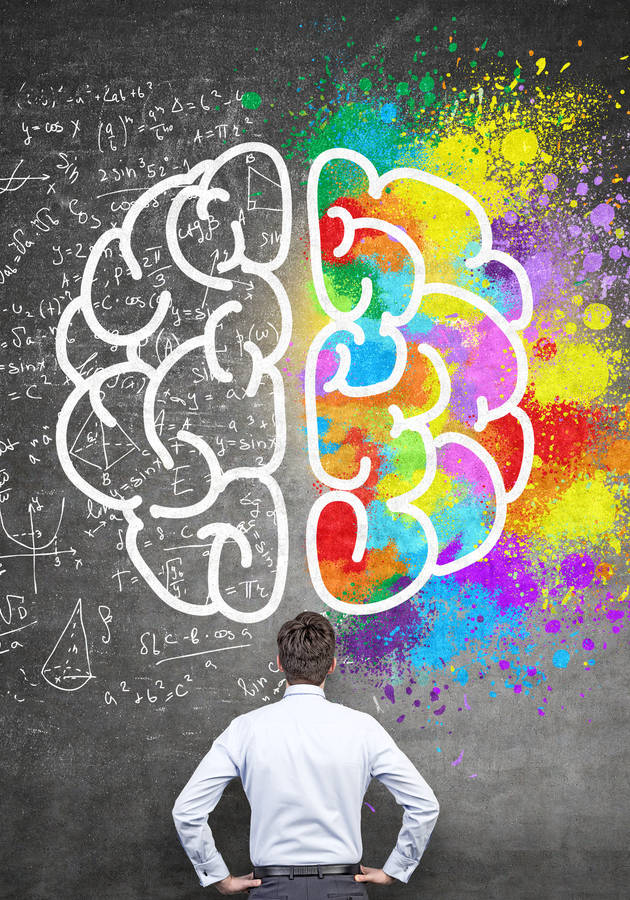‘’The Ultimate Book of Mind Maps’’ by bestselling author Tony Buzan is a definitive guide to using a unique thinking tool called Mind Mapping that unlocks progress in every aspect of your life, including creativity, memory, time management, career, and your private life. The best part is that you do not need very much to make your brain work for you: just a blank piece of paper, colored pens, and pencils. So, get ready to get to know your brain better and tap into your full potential!
What is a Mind Map?
Imagine you need to organize a holiday for your family. There are plenty of things you need to think about - the holiday’s destination, the budget, the luggage you will carry, the accommodations, airport transfers, and so on. As you think about these categories, ideas spring to your mind. For example, you are considering either a hotel, a hostel, or camping for your accommodation. There are plenty of options regarding the other categories as well, so you start writing them down. What kind of note-taking style will you use for capturing the ideas you have? Will you use a conventional method? Or, will you organize them visually, using colors and diagrams?
If you generally use the latter, you will have no problem adopting the principles of the Mind Mapping tool. Buzan defines it as a ‘’creative and effective means of note-taking’’ that presents your thoughts visually with curved lines, symbols, words, and images ‘’according to a set of simple, basic, natural, and brain-friendly rules.’’
To demonstrate what a Mind Map is, let’s describe how you can create one for this imagined holiday planning. First, you would draw a small picture in the center of the paper that represents the holiday. It could be a simple object that you associate with holidays - a sun, the sea or a parasol, for example. Next, draw thick branches radiating out from the central holiday image. At the end of each branch, write the associated words, such as destination, luggage, budget, and booking. Each of these categories would also have branches radiating out from them. For example, the accommodation branch would have these: hotel, hostel, and camping.
Every Mind Map has the same structure. It consists of the image representing the central idea of the map in the middle with branches connected to it. ‘’Starting in the centre gives your brain freedom to spread out in all directions and to express itself more freely and naturally,’’ Buzan notes. Using the image instead of words will encourage your creativity and keep you focused. Connecting the branches to the central image also replicates the manner in which our brains work - by using association. Also, Buzan emphasizes, the linking lines should be curved, not straight ‘’because having nothing but straight lines is boring to your brain.’’ It is the same with colors: they are a necessary element of the Mind Map as they attract your brain’s attention, helping you understand and remember things more easily.
The benefits of using Mind Maps
Buzan says our brains have a ‘’natural aptitude for visual recognition.‘’ Therefore, we are much more likely to remember the information when we use images to represent it.
Numerous geniuses such as Leonardo da Vinci, Galileo Galilei, Albert Einstein, and Richard Feynman preferred using the language of images to capture, develop, and share their thoughts. To explore his ideas in art, physiology, engineering, aquanautics, and biology, Da Vinci, for example, used drawings, illustrations, and diagrams rather than words.
Buzan compares the Mind Map with the map of a city: they both have centers with main ideas (roads in the case of a city map) leading from them. Similar to the road map, which gives you an overview of the larger area, the Mind Map helps you see the ''whole picture,'' enabling you to plan and make choices.
The diagrammatic and schematic organization of your thoughts in the Mind Map will help you retrieve them from your memory more easily later when you need them. Think of your mind as a library - data retrieval and access to them are less challenging when everything is classified. ‘’Also,’’ the author writes, ‘’each new piece of information you put into your library automatically ‘hooks on to’ all the information already in there.‘’ This is especially beneficial for learning, Buzan notes, saying that ‘’the more you know and learn, the easier it is to learn and know more!’’
People all over the world use Mind Maps for various purposes. Buzan gives the example of a man who decided to mind map his ideas for the speech he had to deliver at his best friend’s wedding. On the other hand, the management of Con Edison, the suppliers of gas and electricity to New York, used a big Mind Map to brainstorm the problems residents of Manhattan faced after the terrible events of 9/11, along with the necessary solutions to them.
Unlocking the brainpower
Mind Maps unlock the brainpower, and to understand the reason behind this fact, we should also explain which brain areas control skills activated while using this thinking tool.
The front part of the brain, called the cerebrum, regulates all the main memory and learning skills that we rely on to make progress as individuals. Since the cerebrum divides mental tasks into two main categories - left-brained ones and right-brained ones - many people simply refer to them as the left and the right brain.
In the 1950s and 1960s, the Nobel Prize-winning psychobiologist Roger Sperry conducted a series of experiments on the cerebrum. He revealed that the right brain controls the rhythm, spatial awareness, imagination, daydreaming, color, dimension, and tasks needing holistic or whole-picture awareness. He found that the left-brain, on the other hand, manages words, logic, numbers, sequences, lists, and analysis.
This revelation led to the development of a theory that people generally belong to two groups: left-brain thinkers (with strong math and logic skills) and right-brain thinkers (artistic personality types). However, this idea is just another of many myths about the brain. Further research discovered that people’s strengths and weaknesses depend on training rather than their brain design. When experts helped people train their skills in the areas they were weak at, their performance improved, and not just in those areas. The author gives an example of individuals who were working on improving their drawing skills. The training led to increasing their academic performance generally, especially in subjects ‘’where perception and imagination are so important,’’ such as geometry.
Therefore, by only nurturing skills controlled by one side of the brain, you drastically reduce the brain's overall potential. When you use Mind Maps, you engage both sides of the brain since you combine images, colors, and imagination with words, numbers, and logic. For this reason, Buzan says Mind Maps are a ‘’powerful brain-friendly tool.’’
What can you use a coat hanger for?
Do you consider yourself creative? Give yourself two minutes to do a short creativity test to find out. What you need to do is write down, in list form, every single use you can think of for a coat hanger. Once you finish, divide the number you got by two to calculate the number-of-uses-per-minute score.
According to the global results, the number-of-uses-per-minute scores range from zero to 16, where the global average is zero to four. A score between five and eight denotes a good ‘’brain-stormer,’’ nine to 12 means exceptional creativity, and a rare score of 13 to 16, in the author's words, is ''Thomas Edison-genius level.’’ Considering that everyone can perfect their skills with proper training, the low test scores show that some people are not using their full creative potential.
‘’Your brain is naturally creative and you need only to provide it with the right environment to unlock its full creative potential,’’ says Buzan. The low test scores might also indicate that the conventional education systems are flawed since they often tend to encourage the development of verbal, mathematical, and analytical abilities at the expense of painting, drawing, and music.
How can we define creativity? The creativity test with a coat hanger measures the number of ideas generated within a limited period, which means that creativity and the ability to produce ideas are correlated. Buzan defines creativity as the ‘’ability to think in new ways – to be original.’’ Think about the creative geniuses in world history, such as Picasso, Beethoven, or Thomas Edison. We consider them creative because their ideas were unique at the time.
So, to liberate your creative potential, you need to avoid the conventional ways of thinking that your brain is accustomed to. Mind Maps will help you with that as they act, in the author’s words, ‘’as a gymnasium for your creativity.’’ Since they consist of branches connecting different thoughts and images, they encourage you to explore the relationship between the branches and to also create new associations.
Conduct the experiment with some of your friends to explore their levels of creativity. Introduce them to the coat hanger test and compare who generates more ideas - those who used the Mind Map or those who did not.
Mind Maps in everyday life
Mind Maps boost your creativity and improve your memory and learning skills. They can also help you plan and organize your business and private life. Here are a few hints on how to use Mind Maps in various settings.
- Planning and running a meeting. Your planning begins by drawing an image in the center of the paper. In this case, it can be a flipchart, whiteboard, or graph. Then, use branches to represent areas you need to work on: the names of those attending, the venue, time and date of the meeting, supplies and equipment, the subject and agenda of the meeting, etc. Use sub-branches for details - for example, for supplies and equipment, you could write coffee, water, paper, lunch, or AV equipment. Mind Maps are useful during the meeting as well as a reminder of items on the agenda. When attending one, you can use them as a note-taking tool.
- Preparing for a job interview. Mapping your thoughts in advance will make you answer the interviewer's questions quickly and with confidence. You can use branches to note down your strengths, qualifications, previous work experience, details about the company you are applying for, and so on.
- Learning a foreign language. When learning a foreign language, Mind Maps can help you with memorizing the vocabulary and grammar rules. You can have colorful maps for various topics such as travel, shopping, animal world, body parts, etc. Make sure to often return to the maps you made: repetition is the key to mastery!
- Planning a budget. Taking care of finances gives many people headaches, which can all go away once you start using Mind Maps to organize your budget. Mind Maps will help you monitor your regular expenses: branch headings can represent housing costs (rent, tax, mortgage, etc.), insurance (car, health, contents), travel (season tickets, gas), utilities (gas, water, electric), food, entertainment, and hobbies. Sub-branches can contain details such as the dates when you need to pay your bills.
Final Notes
With just a piece of paper and a few colors, you can bring order to every aspect of your life and improve it substantially. Whenever you feel powerless in the face of problems, Mind Maps will help you get to where you want to be.
Even though it is an instructional type, Buzan’s book is easy to read and holds the reader’s attention right to the last chapter. Moreover, it contains beautiful illustrations of Mind Maps that will appeal to anyone’s eye.
12min Tip
Find examples of Mind Maps other people have created on the internet. You will be amazed at how some of them look like small pieces of art.




























